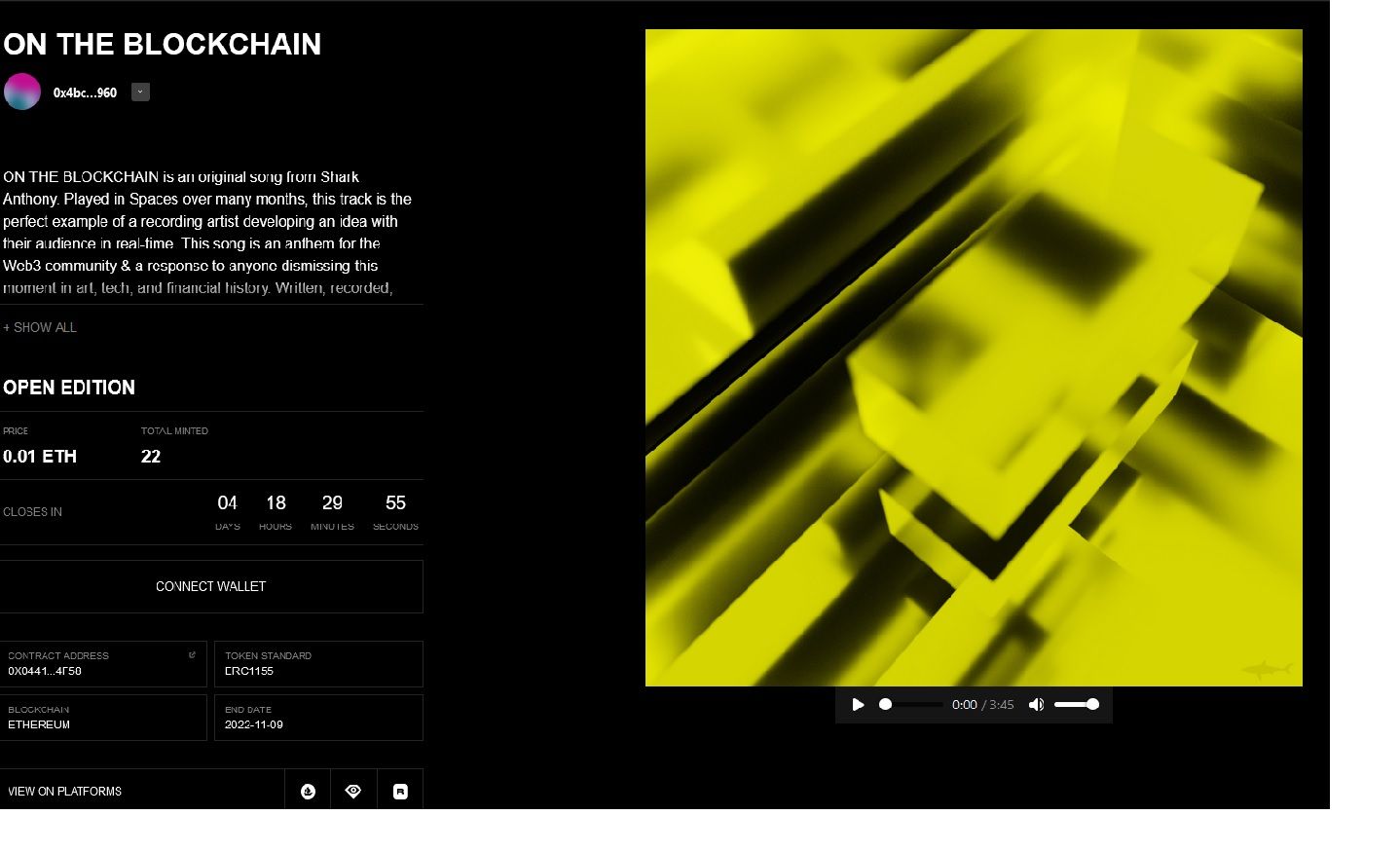One of the more interesting things to come about with the proliferation of NFTs are the ways that creators have been able to leverage their digital nature, like the concept of "burning an NFT" (Burning essentially removes the token from the blockchain forever).
The idea of destroying art in the real world would be very taboo. In the NFT space destroying a token forever seems counterintuitive, yet some artists have embraced it to great success. There are a number of ways that using burn mechanics can be a positive thing for creator and collectors alike. Let's look at some examples of creators who have had success with it.
Laurence Fuller Elevates Demand & Value
Laurence's art generally sells at a high price. He has had a couple burning events with his works that have yielded pretty compelling results. In the example below, he had an initial set of works that he had minted. In order to claim his new drop, 4 editions from the initial collection had to be burned, which could represent several hundreds of dollars. This resulted in close to 80 pieces being burned, and the "Smuggler's Song" piece itself instantly being worth a significant amount.
Smuggler’s Song 🥀🔥 https://t.co/F73B8WPlYh
— Laurence Fuller (@LaurenceFuller) April 20, 2022
On 4/20 to claim this new edition of 20: Burn 4 @Elysium_C_Guild pieces from my secret alt account https://t.co/wQRJbEl1L7
First 20 win the race & any remaining will be burned tomorrow. Comment your burns below to claim #DNS420 #tezos pic.twitter.com/pZv6xRKBR4
This next example from Laurence was done slightly differently. "The Walrus and the Carpenter" could only be claimed if you not only held a "Jabberwocky" piece, but also burned an edition of it too. This led to a small flurry of secondary market activity on Jabberwocky in addition to making The Walrus and the Carpenter more difficult to attain.
The Walrus & The Carpenter 🥀🔥
— Laurence Fuller (@LaurenceFuller) September 4, 2022
Coming to https://t.co/u3dluUSE94 #tezos @dns
To claim ~ must hold one copy of Jabberwocky & burn one https://t.co/qdD5N8egaC
10 will be listed for sale after claims have been made 🔉 pic.twitter.com/OQrOwpxHug
Laurence's use of burning with his drops has been a success on a few different levels. But his attention to detail with his work, the careful consideration he gives to edition sizes and availability, and his overall rigor have made his burn events memorable and valuable.
Nicholas Dimes 🏎️
Nicholas Dimes has also utilized token burning in a couple different, successful ways. In our first example, Nicholas had an upcoming drop titled "FANATICS". But in order to claim a copy, you had to burn one of his genesis pieces. In total, 32 out of 100 copies were burned, making this a pretty successful event.
*Announcement*
— Nicholas Dimes (@nicholas_dimes) September 1, 2022
Some of you collected and held onto 94 WIN, some even collected multiple.
In order to be a part of the next drop which will be called FANATICS you must burn 1 edition of 94 WIN.
Only eligible for 1 edition.
Burning period ends 9/01
not later than 4PM PST! pic.twitter.com/lFg52IRVHD
In this second example, you had to burn 5 editions of "The Trophy Room" just for a chance at securing "95' WIN", his next drop. He's using The Trophy Room as a one-time raffle ticket, which is a great example of gamification that's not really possible in the traditional art world.
NEW DROP!
— Nicholas Dimes (@nicholas_dimes) October 19, 2022
95' WIN has been minted.
10 will be listed and 10 will be raffled.
To enter raffle you will need burn 5 Trophy Room editions.
A new character emerges!
We here at Dimes Racing are excited to share more about Chip Grains with you. #tezos pic.twitter.com/SZpLe7Bl9c
Nicholas Dimes has fully embraced the digital nature of NFTs with his burning mechanics. He knows what he's trying to achieve, and he does that - his NFTs have a very video game like feel to them and it feels like he's maximizing on that with his drops.
Open Editions

Open editions are also an option when it comes to limiting the amount of copies in circulation - which means there's a window of time that the NFT is made available to mint, and when the time is up, the amount of tokens minted becomes the total supply. Manifold is a great tool used by Ethereum creators to deploy their own smart contracts, and have made it easy for people to deploy open editions. It's an easy, clean way to put out work that doesn't involve having to burn anything afterwards.
Burning Unsolds ⏲️
One alternative to a Manifold open edition is to simply mint a large number of editions, and then burn the uncollected editions when the time is up. Versum offers a "timed swap" that achieves this effect, (you list the NFTs for specified length of time, but when you go to delist they get burned) but you can also do it manually by burning the unsold editions and the end result will be the same.
Evil Idea: Griefing 😢

We don't necessarily recommend this line of action, but burning someone's tokens can be used as a form of griefing. There have been arguments between creators in the space, and people have burned NFTs from creators they don't like as a way to grief them. You're essentially saying that their NFT is worth less than nothing to them, in fact you'll pay a transaction fee just to rid your wallet of it! Sometimes, it's just about sending a message.
Flame On 🔥👋
As creators discover new ways to use NFT technologies to engage their audience, we never know which ideas will take off and which ones will be a fun gimmick. For now, we think it's best to experiment, be curious, and supportive of these pioneers as we sit back comfortably and watch the world burn.